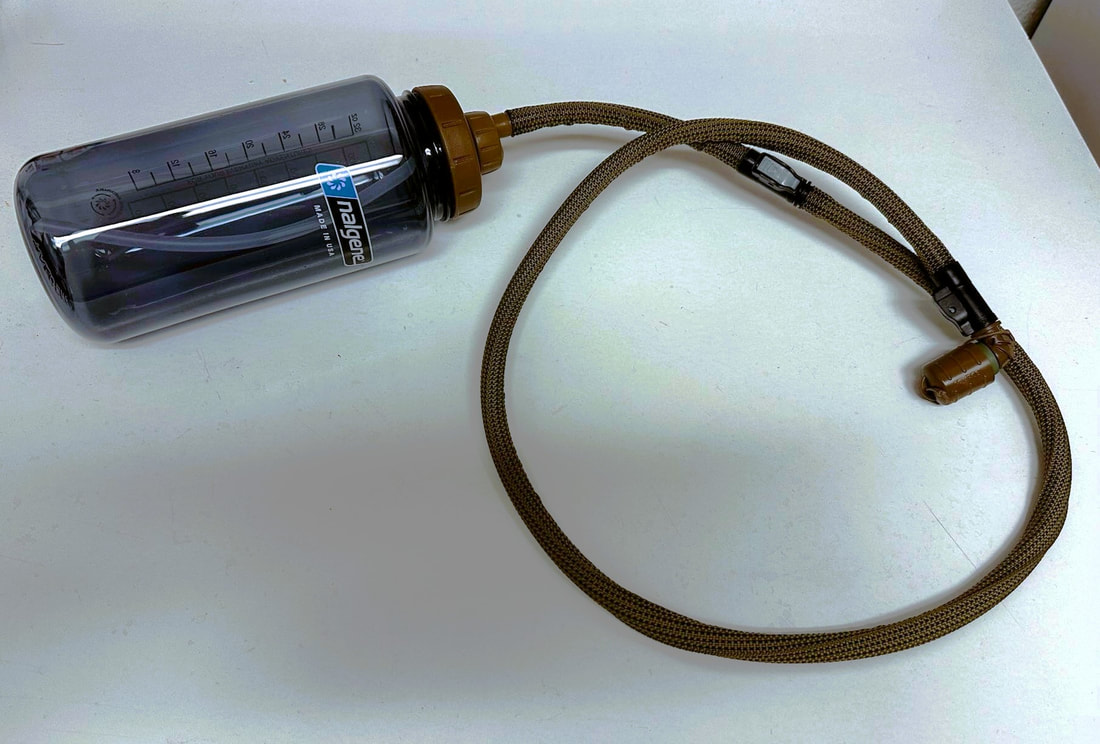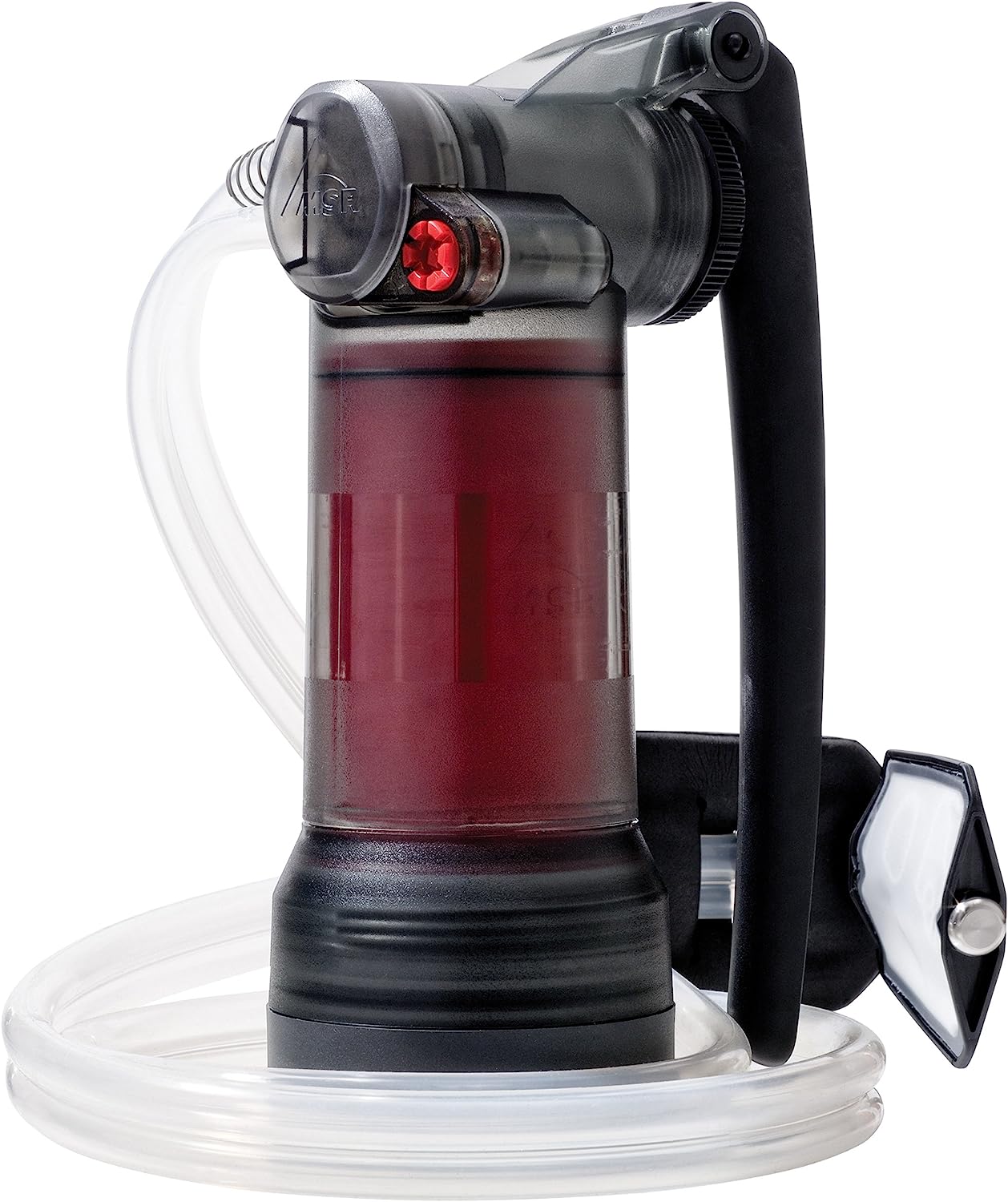|
We actually didn't shoot, despite putting targets down range. Why? No cans, for one. Two, the idiots were actually so close we thought it would be rude to start shooting in the darkness. The morons would have probably been utterly terrified that we were shooting and they would have no idea we had everything under control while wearing NODs.
Second, we also had a thought that they might be homeless or at least boondockers, and while fucktards who camp at any time, night or day, on a BLM shooting area, don't deserve any courtesy, disturbing homeless car campers who aren't shitting up the city itself would be too inconsiderate of us. Third, they were outside the ricochet zone but they wouldn’t know that. Also, unlike during daylight shooting, there would be no way to see them and one of the dumbasses might be out in the moonlight without a cheap flashlight to mark their position. Might be bad. Finally, we were up-moon from them, meaning we were backlighted. If they felt threatened and were armed, they had a clear silhouette of us. Discretion being the better part of honor, we packed in the targets after we played around with the different settings without firing a shot. I established a rough converging zero on that Somogear fake PEQ-15 I picked up. I have some questions about the illuminator (IR laser flashlight) but need to try it on a moonless night. One thing we noticed that under the monocolor of NODs, a white painted steel target doesn't really stand out. The lasers will reflect off it though. So we went driving in the darkness on desert roads. Driving IS possible with a monocular like the PVS-14, but there are a couple of caveats. 1. We had a full moon. Great contrast and the shadows weren't really deep. 2. We left before astronomical twilight was over, meaning there was a lot of sky light available. If you have both eyes open and enough ambient light, your brain will fill in the image well enough to give you some depth perception. I had issues keeping it "between the lines" so to speak but otherwise did fine. Got up to 80 on some sketchy roads. Pretty sure hearing a truck blasting by a high speed in total darkness freaked out the 'tard campers. Also when driving at night you gotta cover up the instrument cluster and turn off the dash iPad, I mean the stereo screen. This isn't a Crown Vic or Tahoe where you can just hit the blackout button. The nice thing about being the driver and wearing NODs is, that unlike my limited professional experience with them looking for agricultural thieves, I can control the vehicle and didn't get seasick. With more practice a passenger shouldn't have this problem either, assuming the driver isn't a jackass or a bad driver. As far as my personal PVS-14, well you can see I need to get a better photography solution for it than holding an iPhone up to the eyepiece. The three camera system in the iPhone Pro sucks for this kind of thing. Also the halo (ring around bright lights) are why I suspect this otherwise flawless tube was kicked from the military line to the civilian side. NV tubes for civilians are the ones for the military that don’t make the grade for some reason or other; not quite “rejects” but that’s literally what the engineers call them. All ITT Pinnacle tubes of that era had a noticeable autogate whine but I’ll take that over a big, splotchy black blem any day. Lastly, I think I need a 2.26” riser for proper passive shooting through my red dot. The 1” riser didn’t cut it, and the 1.93” was a stretch. BUT the biggest issue was one of focus. NODs can’t really focus on everything like your eye. You can focus to infinity, put on the day cap for a pinhole effect, but neither will make the red dot and the target come right into focus. Again, I’m late to the passive shooting party so I need practice, but I’ve read that focus and aligning a monocular behind the red dot can be challenging so it’s not entirely me. No, active IR won’t get you killed; using it stupidly and without discipline will. But that’s for the book. 😉 Otherwise, it was pretty easy to get the rifle at least up and on target, especially with the laser. And yeah, that Somogear was WAY brighter than the Steiner COBL CQB laser I was using. I could see the dot but not as clearly and it too slightly more mental effort to recognize it. In full moonlight or ambient conditions, I’m going to have to pony up some money for a proper IR laser. Video taken of the valley through the PVS-14 itself using an iPhone. A link to the Twitter thread if you want more video. My Somogear “airsoft” clone PEQ-15 arrived. This is a Chinese replica multifunction aiming laser (MFAL) that retails for $250 and is touted as having laser output levels in excess of civilian-available laser modules. According to reviews and enthusiast testing, this device exceeds the federal guidelines for laser power, which is its major appeal.
Before we continue, I did not buy this for operational use. I have Steiner COBL that real use and an Aimpoint Pro Patrol on a Unity riser. Eventually I’ll buy a MAWL but I’m cheap. This is for testing and evaluation (T&E) purposes in a training environment. As for why specifically I got this when I already have one was to mess around with the laser illuminator. Note that devices like the PEQ-15 have a few features; visible and IR aiming laser pointers and an infrared illuminator. You need an IR spotlight to identify targets downrange the same way you would use a white light. My COBL doesn’t have an illuminator and my white/IR flashlight is not good at long range. Now rather than use LEDs and reflectors, proper MFALs use laser illuminators which are basically laser flashlights. A separate infrared laser (not the IR aiming laser) is designed in such a way that the beam is broader than the aiming beam, but still tighter than a flashlight beam. This gives you a powerful, narrow beam that is capable of lighting things up at long-ish range. The full power element comes in because, surprise, a more powerful laser will go a lot further than a neutered civilian one. The Somogear is billed as a “full power” or at least higher power that is not compliant with federal laser safety regulations like your civilian version PEQ-15, the ATPIAL-C, does. Apparently the Federal Laser Police have better things to do than bust imports of these things. Do you need a “full power” laser? Not really. You aren’t lasing targets for an A-10 but the aiming portion isn’t why I got it and not why you want full power. Again, I have my own laser that I can pick up at 500 yards, but to summarize, full power is about the laser illuminator, not the laser pointer. I do not endorse using Chineseum products, especially for operational purposes. If your life depends on it, buy American or at least European. Again, this is a training tool that I’m going to review, not something I’d trust my life on. Now if you can’t afford to drop another couple grand on a quality MFAL but you already have night vision, this isn’t a bad temporary halfway measure. However, understand that it may fail you when you need it. It should be replaced with a quality device as soon as possible. Reviews indicate that these things can have problems. Chinese quality control sucks and at this price point, it’s hit and miss. The electronics are supposedly “potted” to withstand rifle recoil, but some users report no issues after hundreds of rounds and others failures after only a few shots. The polymer case can crack (there is/was someone replacing them with aluminum housings). While they generally hold zero, the mechanism isn’t as robust in the real thing. Again, these were intended for airsoft and probably just beefed up a tiny little bit once the Chinese realized American gun owners would buy them. Field use will follow in later posts, but I want to summarize a couple things.
For what it is, it’s not bad. Clearly not a real PEQ-15, but it feels robust enough. The remote switch is crappy but whatever. You get a nice pouch with it. Convertube Water Bottle Adapter Kit
I prefer to drink out of water bottles when hiking, usually when stopped for a break,but that's not always possible and sometimes I really need a sip while I'm moving. The Camelback hydration bladder was invented in 1989 and has been a godsend for hydrating on the move. But the plastic bladders are a pain in the ass to clean and can get skunky. So rather than deal with the ordeal of cleaning them and drying them out, I decided to try this system. The adapter can fit any bottle but you see it here with a Nalgene. I'll probably start with a Nalgene in the field and swap it over to the tall 1.5l plastic bottles which I love because I can crush the empties down to nothing. Yes, the bottles cost money and have to be recycled, but for about a buck each they don't break the bank. This solution will also work with my reusable bottles, hence the Nalgene. The Nalgene in particular will work well with my purifier (MSR Guardian). Also the humangear capCAP+ blows away the regular Nalgene Airplane drinking problem style widemouth lid. What's an Airplane style drinking problem? It's where you splash the water in your face. So yeah, that's that. I'm conducting a summer-long study of water-related gear. I've seen y'all in the Twitter and right-wing gun nut spaces tout various products and I'm putting them to the test. They are:
MSR GuardianThe MSR Guardian is a virus-rated water purifier. If you need to know more about it or want the specs, go read them on Amazon. It's big, like the size of one of those large cans of baked beans or a giant can of beer. It's not particularly heavy. The shipping box is stout and I suppose it could be used as a protective case. I went with this instead of the smaller MiniWorks because I want protection against waterborne viruses and I liked the handle operation versus the bike pump of the Katadyn. I tried the LifeStraw water bottle in the past and it was like sucking a golf ball through a garden hose; hard pass. I intend on testing this at desert lakes and in the Sierra, including swim beaches at popular lakes. About viruses: Hydrapack StashSomebody, probably a Ranger, suggested the Hydrapack Stash as a collapsible canteen. I got some "collapsible" bottles for Christmas but they were soft-sided versus being able to crush down like a soda can. I really wanted this for empty-pack space saving, especially on the way out. This I can fill from the tap and carry full or fill in the field from the purifier while saving space when not in active use holding water. I don't think this will be all that complicated, but I suspect durability and taste could be factors. Conveniently, it screws into the bottom of the MSR. Nalgene and Human Gear Cap CapOne of the problems with Nalgene bottles and their clones is the extremely wide mouth, which is why I never used the brand name ones. Open the lid and if you're not careful taking a sip, you end up splashing water down your face. Okay if it's hot and you have lots of water, bad if it's cold or you have little water. I do hear that in the Antarctic everyone who goes out on the ice carries one of these to pee in so the urine doesn't contaminate the pristine environment. Of course, I'm told Nalgene is nearly indestructible and the gold standard of water bottles in the wild. Problem is, they don't collapse (see above). To get around the splashing problem, enter the humangear CapCAP+ (if you want the proper name). Basically it's a lid for big opening with a smaller screw-top above that that will replace the OEM Nalgene lid. Advantage? It gives you a sipping/pouring sized drinking hole. Yes, you could get one of those suck-top bottles but I feel too much like a baby to use something like that and I hate having to clean off soft drink container lips like that. Give me hard plastic that's easy to sanitize and wipe down. I'll let you know how it goes.
Jump to:
Citizen defenders concerned about protecting themselves, their homes, and their neighborhoods in perilous times are often in search of ways to enhance their defensive capabilities. While the most effective riot/crowd control products are unavailable to civilians, even if they are technically legal to own, there are some solutions. In the category of distraction devices, airsoft flashbangs are widely available.
The airsoft and paintball world often devotes itself to realism, joining the two sports and the use of military tactics under the acronym MILSIM, for military simulation. As many of the Close Quarter Battle (CQB) tactics used in combat are used in MILSIM games, distraction devices are very popular. Best of all, these are all civilian-legal products with no special licensing (in the USA) required. Stun grenades, or flashbangs, are non-fragmenting less-than-lethal distraction devices intended to temporarily disorient a person by startling them, inducing temporary hearing loss, and impairing their vision from the bright flash. They are often deployed when breaching a room to give the entry team time to neutralize the disoriented suspect or enemy. Flashbangs utilize a fuse to ignite a pyrotechnic mixture of flammable metals and oxidizers to produce one or more extremely loud bangs and a bright flash. Military/LE models can generate sound greater that 170 dB, which can cause hearing damage. In enclosed spaces, concussion can disrupt a person’s sense of balance. Flashbangs generally differ from more powerful concussion grenades, which are often considered to be lethal force. Airsoft (and they can be used for paintball) flashbangs are civilian legal devices that mimic law enforcement and military flashbangs. Many come with bodies that are styled after the military/LE models and can be realistic enough that a casual observer may not be able to tell the difference. Like real grenades, most are designed to be thrown and many can be adapted to boobytraps. Technically, the airsoft products would be classified as sound distraction devices as not all flash but they do bang. The intent of these products is to startle the opponent to give the player an advantage immediately after deploying the grenade. While these devices certainly will startle someone, they are not as loud, bright, or disorienting as the real thing. They can, however, relatively cheaply and easily provide a distraction/diversion capability to a citizen defender. There are three types of airsoft sound distraction devices; CO2 gas powered, blank cartridge, and pyrotechnic. The gas powered type uses pressurized gas to basically rapidly inflate a balloon that then pops with a loud bang. The pyrotechnic types are basically firecrackers in a shell that lends the appearance of a grenade. Nail-gun blank types use .22 blanks to create the bang sound. All use pin-and-spoon fuses. Some gas powered types are reusable or have reusable parts. None should be considered field reloadable. Fuse timing is variable depending on the individual product purchased; varieties may be sold based on fuse time (i.e. two second, five second) or it may be user-selectable. Detonation may be initiated by releasing the spoon (the trigger) or upon impact, depending on the product. Most products resemble military/LE devices to a degree. There are only a few widely available manufacturers available. Dangers include:
Gas Courtesy APS Concepts Courtesy APS Concepts
True gas flashbang designs have a balloon-like shell that expands under gas pressure and ruptures or “pops.” Pressurized gas is provided by a 12g CO2 cartridge or “green gas” to basically rapidly inflate a balloon that then pops with a loud bang. These have a single use shell (“balloon”) and reusable core which consists of the fuse mechanism and gas cylinder or cylinder holder.
Rupturing shells are single-use consumable items, often sold in twelve-packs. Cores are reusable multiple times as are some bodies. Depending on the model and the user, some timers can be modified. Timing is often dependent on the type of the body purchased with the manufacturer specifying the delay. “Green gas” is a propellant that is user-refillable for airsoft weapons, similar to a butane lighter refill. Green gas is pressurized propane gas mixed with lubricants such as silicone, which is flammable, though the amount of gas expelled from a banger grenade is minimal. Gas powered grenades should not be mixed with pyrotechnic weapons and use in lethal combat situations may be contraindicated. Without an external source of flame, the chance of a fire is much lower than a pyrotechnic grenade.
Bodies are typically round but some products may feature anti-roll hex ends (“dumbbells”) like some genuine flashbangs to limit rolling. The Thunder B series of reusable gas grenades has the widest variety of bodies/shells available. Note that cores and shells/bodies are often sold separately due to the reusable nature of some products. Replacement shells, pins/spoons, and extra gas or cylinders should be purchased before any anticipated emergency.
Gas powered grenades are based on “fragmentation” type airsoft grenades that expel plastic BBs instead of lethal shrapnel. The bodies are engineered failure points to enable the shell to rupture so the BBs can escape. Early airsoft and paintball grenades shot out, respectively, BBs or paint to “kill” the enemy. With high pressure gas alone for “bangers” there are no fragments, though many BB “frag” grenades have empty shells that can be filled. These airsoft frag grenades tend to have a softer report than bangers, which are optimized for sound though some newer designs may produce both a louder report and spray of BBs. Law enforcement uses similar “Stinger” grenades in riot/crowd control but using harder rubber balls or chemical irritants. The spray of BBs is non-lethal and non-injurious to a protected person, although the greatest risk of serious injury to an unprotected person would be a pellet striking an eyeball. Thus, care should be exercised if these are deployed outside training or a game.
Pro:
Con:
Pyrotechnic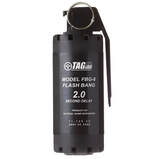 Courtesy TAGinn Courtesy TAGinn
Pyrotechnic flashbangs are essentially fused firecrackers in a grenade-like shell with the triggering mechanism a pin-and-spoon. They are the only non-electric type to produce a flash. While these are combustible items, unlike military/law enforcement grade flashbangs, these contain less powder and do not create the same level of noise and flash. Some models are available to law enforcement only for training purposes and generate much louder sound levels.
For defensive usage, bodies constructed of foam should be used, rather than hollow cardboard or plastic, to ensure crush resistance. In combat, one may need to drop prone suddenly or make other sudden movements that could result in damage to a grenade body. Accidental detonation is very low-probability, but not impossible, though use of standard airsoft/paintball protective gear is sufficient to safeguard the user. The products are considered flammable, but many products have been designed to mitigate the danger of fire should they land in dry grass or other combustible debris. Some versions do spray sparks similar to small fireworks. Pyrotechnic grenades are subject to HAZMAT shipping which will entail higher charges, adult signature, and receiving a package with a prominent explosives warning sticker.
The flash effect is enhanced at night or in dark spaces. Smoke is produced, but not to the degree of a true, concealment smoke grenade. Bits of foam or cardboard may be blasted around but should produce no injuries. The debris, smoke, and flash may be used to enhance their psychological effect or it may lead some to wrongly conclude an explosive detonated, which could be a concern in the case of political prosecutions.
For those in search of a turn-key solution, these are the best option. No loading or other prep work is required, although one may want to secure the spoon and pin with electrical tape in the event of a mishap.
Pro:
Con:
Note: TAGInn, the leading maker of pyrotechnic grenades is Russian, so the supply dried up in the West due to the 2022 economic sanctions as a result of the invasion of Ukraine. Supposedly the company was looking to start a Western subsidiary, but I have not seen any evidence of that coming to fruition. These grenades are not hard to build, and I do seem to recall a similar one with a cardboard body in the past, but I have not seen any available online.
Blanks
The newest MILSIM distraction grenade, blank cartridge devices are gaining popularity. These use .22 caliber nail gun cartridge blanks a.k.a. powder-actuated fasteners (“Ramsets”) as the sound generating device. While the design is currently proprietary, they are billed as the loudest grenades available. The report sounds like a gunshot, however (video: language warning).
Nail gun fastener blanks are available at many hardware stores. These tend to be the loudest versions and may have selectable degrees of loudness, depending on the product. These are reusable and considered very reliable. Excluding damage to the body and replacement of safety pins, these are probably the most cost-effective options. To load, the timer delay is set, a blank is inserted, the body screwed closed, and the safety pin is inserted. To deploy, the safety pin is pilled, the grenade thrown, and the impact-actuated timer will be activated on contact with the ground. No flash will be produced. Pros:
Cons:
Electronic Courtesy Zhenduo Toys Courtesy Zhenduo Toys
As of this writing, electronic distraction grenades are uncommon. Strobe lights in dark environments are known to produce a disorienting effect. One would think something so simple would be a common product as it could simply be recharged after each game, but alas, they are not. Electronic flashbangs are basically personal alarms intended for self-defense use in jurisdictions where guns and pepper spray (OC) are illegal.
Nextorch Distractor video (not pictured) These include strobe lights with a loud speaker inside to blare an alarm (not an explosion). These are reusable and rechargeable products. Some models have more grenade like features, but also some only have a strobe light. These may be used as a rescue signaling device or in combination with a non-flash grenade, but don’t have the same effect as a true flashbang. For strobe light usage, an actual purpose-built strobe is probably best.
Pro:
Con:
Conclusion
It must noted that any flash effect produced, if at all, will not be as effective as a military/LE grenade, nor will the sound/concussion. These are mainly psychological devices, rather than a weapon that will produce involuntary physiological reactions. For more information regarding airsoft grenades, including smoke grenades, and the employment of these devices and other methods of riot/crowd control, please see my books Suburban Defense and Suburban Warfare.
"But I could just use a firecracker/firework." You need matches or a lighter to ignite a firecracker and most fireworks. This adds precious time to the deployment process which you might not have. Also, these are much more likely to be regarded as destructive devices than a noisemaker. Fireworks also carry a higher chance of injuring those on the ground or the user, as well as starting a fire. The author is providing this content on an “as is” basis and makes no representations or warranties of any kind with respect to this content. The author disclaims all such representations and warranties. In addition, the author assumes no responsibility for errors, inaccuracies, omissions, or any other inconsistencies herein. The content is of an editorial nature and for informational purposes only. Your use of the information is at your own risk. The author hereby disclaims any liability to any party for any loss, damage, or disruption through use of the information.
Note: dB levels may be variable based on the source and distance measured at. All should be considered as loud as an unsuppressed gunshot and hearing/eye protection should always be used. No retailer endorsement is implied. These products tend to sell out easily and fast, especially the more effective models.
Recently, I received the following email from a reader:
“In Limited Exchange Carson used a Victoreen Geiger counter. The only Victoreens I can find are of questionable quality on eBay. Do you have a suggestion for any other radiation meter that I could purchase?” I replied that I didn’t have any specific recommendations, but I explained that I chose the old yellow Civil Defense (CD) Victoreen detectors because they were quite ubiquitous during the Cold War and still are. They would be easy to source and it would not be difficult for my engineer characters to service and calibrate them. Modern devices are so much better, but they are expensive and it is difficult to find a modern equivalent to the CD meters. Why should you have radiation measuring equipment? There is no way to “gauge” radiation levels without instruments. That leaves a survivor at the mercy of local emergency services and the federal government/military to provide regional radiation levels. Many civil defense programs have been utterly gutted and focus on higher-probability, lower impact events such as tornados and floods. A nuclear war quite probably will leave you on your own for radiation readings. Individually, a personal radiation instrument can:
BLUF: Build your own (read on) or be prepared to shell out the big bucks. The selection on Amazon sucks and is nearly worthless. A really good condition and tested CD meter may be a good, affordable compromise. Basics Radiation detector is the proper term for what is often incorrectly or off-handedly called a “Geiger counter." A better term is radiation detector or radiation survey meter. These measure ionizing radiation as produced by a nuclear reaction (explosion or reactor). Electromagnetic radiation such as radio or microwaves are not a factor in this context. We will focus on the use of these detectors for post-nuclear war survival in a fallout environment particularly for those sheltering. The most dangerous phase of a fallout event is the acute (early) phase when the particles are falling down. Radiation is greatest in the first 48 hours, decreasing dramatically until the next major plateau stabilizes after about two-weeks. If local emergency authorities are intact, they will provide regional radiation readings but the continuity of emergency services or the specificity of these readings may be spotty. Individual measurement is the best way of knowing one’s radiation exposure. Anyone exposed to more than incidental global fallout would benefit from having a way to measure radiation while sheltering. An expedient Kearny Fallout Meter (KFM) can be made at home using common household items, but a purpose built detector will be more accurate, have additional features, and are not susceptible to human error in construction and calculation. Radiation detectors come in two types: survey meters and dosimeters. Survey meters are like a thermometer which is intended for an instant read and dosimeters are a measure of cumulative exposure over time like a rain gauge. Fallout produces three types of radiation: alpha, beta, and gamma. Alpha and beta radiation typically produce burns. Alpha radiation will be stopped by your skin or clothing. Beta radiation is a bit more powerful, but will not penetrate the walls of a typical home to any great degree. The danger these two present is from ingestion, so filtration of air, water, and careful cleaning of any contaminated food is the precaution for them. The most dangerous form of radiation (unless you eat fallout) is gamma radiation. This is what people are thinking of when they think of nuclear radiation. Gamma rays will penetrate all but the densest of materials easily. Eight-inches of lead or six feet of dirt is required to reduce the penetration of gamma rays to essentially negligible levels. Gamma radiation is what you are worried about. Not all devices will measure gamma radiation. A detector that only picks up alpha and/or beta radiation but not gamma will give dangerously low readings. The same problem will happen with meters that do not register high enough; .5 R/hr might not seem all that dangerous, but if that is as high as the meter will go, one could be in serious danger. The characteristic clicking sound that radiation detectors make in films are a result of ionizing events that are detected, that is, when a gamma particle passes through the detector. This causes a change in the electrical signal which is then used to produce a click through a speaker or headphones. The audible noise serves as a kind of warm/cold indicator. Count rate measurement (cpm or counts per minute) is mainly for alpha and beta radiation. A “count” doesn’t help you. A count is defined as the number of ionizing events. For survival needs, counts don’t help as they do not convert into dose rates. Dose, represented by Roentgens (R) or Sieverts (Sv), indicates how much radiation is present in a form that can be interpretated as risk to human life. A dose indicator is like a thermometer. I recommend Roentgens because a Sievert equals 100 REM (Roentgen Equivalent Man) and use R/hr because the differences between REM and RAD (Roentgen Absorbed Dose) are minimal. R/hr is also how old Civil Defense publications will read as well so it eliminates the need for conversion. Note that μSv (or uSv) is a micro-Sievert, or one-one thousandth of a micro-Sievert (mSv), one-one thousandth of a Sievert. 1 μSv is equivalent to one-ten thousandth (.0001) R and 1 mSv is one-one tenth (.1) of an R. A Sievert is the rough equivalent of 100 R. The “Geiger counter” is not what most devices are today, though they may incorporate that technology. Geiger-Mueller tubes can be saturated by high levels of radiation which may lead to an erroneous conclusion that the radiation is lower than it actually is. Radiation detectors that measure higher ranges of gamma radiation use alternate technologies such as different types of gaseous ionization chambers or scintillation counters.
Civil Defense meters
Civil Defense (CD) yellow radiation detectors were made for various purposes. Victoreen was the most prolific manufacturer of radiation detectors in the early days of the Atomic Era. Many of these models were sold by FEMA as surplus in the late 1990s and can be commonly found for sale in various states of appearance, repair, and precision. The V-700 was intended for low-level radiation, such as an accident, contamination, or a long time after a fallout event. These were Geiger tube only designs. The V-700 is particularly susceptible to saturation of high radiation and would be worthless in a heavy fallout environment that a nearby nuclear explosion would produce. The V-700s are best suited for detecting alpha and beta radiation giving them little utility to a survivor. The V-715 is the most common model available today, followed by the V-717 and V-720. They are capable of measuring radiation between 0.1 R/h and 500 R/h using four scales (multipliers): ×0.1, ×1, ×10, and ×100. The V-717 model came with a remote probe and anti-contamination bag that could be placed outside a fallout shelter to provide the outside radiation level without leaving safety. The V-720 has a moveable shield on the bottom that can be slid open for measuring the beta radiation level as they cannot penetrate the steel case as gamma rays can. Can you use old Civil Defense meters? Yes, as long as they have been refurbished and calibrated by a competent source. For this, you will need to check the reviews and qualifications of the seller carefully. These are mechanical devices which, as long as they are in good working order, should function just fine with fresh batteries. Kearny Fallout Meter (KFM)
Noted nuclear survival author Cresson Kearny had an important caution that some meters might under-read high levels of radiation. He actually summarizes this article and his 1987 advice is frighteningly contemporary even today, 35 years later. This is why he recommends his own meter, the KFM. See also: Nuclear War Survival Skills
Neither calibration against a radiation source or tuning should be performed by an end-user who does not have specific knowledge, experience, or training doing this kind of thing. Drift of the gauge may occur over time and can be adjusted by the means of a screw inside the case. The “check source” of lightly radioactive material has well passed its half-life and cannot be assumed to be accurate. If you really expect to need to use your radiation detector, an incorrect reading may get you killed in one of the most horrible ways possible. V-715 has the least features of all the high-range CD detectors. Additionally, unmodified V-715s can have issues with losing calibration. Models with an “R” marking indicating a retrofit are much more reliable. Non-R marked V-715s should not be used, even if the seller claims that they have been rebuilt or refurbished. Non-Victoreen brand models should not be used. The V-715 includes a remote probe and a 25 foot cable that can be placed outside a shelter for remote radiation monitoring. It can also be used as a general survey meter, making it perhaps the most useful CD detector. The V-720 is considered generally reliable although the beta measurement capability may not be a factor for most users. The V-740 dosimeters are rare due to electrical leaks and failing accuracy tests. They were superseded by V-742 dosimeters and also the most common. It is necessary to buy a charger in order to use CD dosimeters. These chargers are original, special equipment and charging is not like how we would charge a phone or something similar. Should you use a 60 year old instrument? Your life may depend on this device, so why not get something that is guaranteed to be reliable and accurate? Old CD detectors don’t have return policies where you can just take them back to the Eisenhower Administration and get a new one. Modern designs include features like a digital readout, self-diagnostics, superior battery life, increased accuracy, alarm functions, and a smaller size. To answer the question, not if you can afford a modern one; affordability being the key. Wherein the problem lies with price and availability. Since the customers for these devices are industrial or government, prices are on a “quoted” basis and several hundred to thousands of dollars. Someone with the money may want to make an investment otherwise for persons of average income, a quality CD detector is probably the best purchase. Survey Meters, Dosimeters, and Alarms
Survey meter
Survey meters are generally handheld and may include remote probes. These detect surface contamination and background radiation in an instant-read method like a thermometer. The above section on the CD V-series is a good explanation of what a civilian survey meter should include. Desired features:
Do not buy an “EMF meter” or one for electromagnetic radiation; these are either ghost hunting tools or measuring things like radio or microwaves. You are measuring ionizing radiation. These tools are worthless for a nuclear war. Dosimeter A dosimeter measures personal exposure to radiation, sort of like a “sunburn detector” if there were such a thing. Damage to the body from radiation exposure is cumulative. Damage done by very small doses over time can be repaired by the body but as the dose increases, the chances of a damaged cell becoming malignant and causing cancer or other serious injury rise. These are individually worn passive devices. They do not provide an immediate reading of the radiation level making them useless to determine the radiation danger until after exposure has occurred. Some models allow for the wearer to see a real-time reading of the accumulated exposure. Only modern electronic dosimeters can provide helpful real-time information. Dosimeters are useful for knowing how much radiation you’ve been exposed to, especially in environments where conditions and radiation levels vary or are unexpected, making measurement difficult. These are most often found being used by emergency personnel or those who work around nuclear materials. Normal occupational rules prohibit exposure of more than 5R/500mSv which would prompt someone to be pulled out of danger before serious radiation injuries could occur. In a post-nuclear war environment, levels for emergency workers performing absolutely critical emergency work (i.e. rescue) in radioactive environments can be as high as 30R. Sources of contamination may vary wildly when out and about, so a live-read dosimeter is critical for knowing when they need to get to safety. For survivors, a dosimeter may be helpful but not necessary. Those sheltering will have relatively static rates of exposure and if they have a log of accurate readings individual dosage can be calculated. Dosimeters worn by radiation workers in nuclear power plants measure the whole body dose. These are usually clipped to clothing and provide a digital readout of the cumulative dosage received and may have an alarm for dangerous levels of radiation. Digital electric models typically use MOSFET transistors to measure the radiation level. The oldest dosimeter technology is the film strip badge that does not provide a reading in real time and requires the film to be developed which is where much of the cautions come from. Older CD pen-style dosimeters (pocket ionization chamber) used a quartz fiber that would take its measurement from the change in static electricity held on the fiber. These require charging before use. Electrostatic repulsion of gamma rays ionizing the gas in the fiber chamber causes the fiber to become straight, which in turn moves the gauge. This is the same principle by which the Kearny Fallout Meter operates on. Other detectors include thermoluminescence. These are composed of a crystal matrix of elements that when exposed to radiation trap the radiation and release it was light. The light released is proportional the radiation intensity which allows the exposure to be accurately calculated. Electronic devices measure the light being released while non-electric devices have strips that change color, like an instant-developing film badge. Electronic Personal Dosimeter (EPD) Modern electronic dosimeters are best and most can take instant readings of the ambient radiation level (like a survey meter) in addition to recording the cumulative dose. Some may include high radiation alarms. Preventive models are used in scientific or energy settings where radiation exposure is planned. These models are primarily administrative in nature and not designed for high radiation environments. If a nuclear worker’s dosimeter alarm sounds, it’s time to leave. Personal Emergency Radiation Detector (PERD) Emergency models are like the EPDs above, but are made for first responders and are thus more robust. PERDs are appropriate for use in much higher exposure rates, and have variable settings for different response zones (Cold, Hot, and Dangerous Zones). They are specially designed to avoid oversaturation effects. HAZMAT and nuclear response teams use these devices as their work will expose them to level of radiation where a scientist or engineer would simply evacuate away from. Affordable non-alarming PERDs are like film badges but are instantly readable. One such is the RADTriage Model50 Personal Radiation Detector is a credit card sized dosimeter that uses a color-coded matrix to provide visual indication of radiation exposure. Measurements are approximate and insensitive to lower levels of radiation. Their main advantage is their small size, robust nature, lack of batteries, and cheap cost. The above only measures medically significant doses: 50-4,000 mSv (5-400 R/.5-4 Sv), making it suitable for a nuclear fallout environment. Additionally, it boasts a 2-10 year shelf-life (extension possible in freezer) and does not require batteries or calibration. It measures cumulative doses; the more radiation it receives, the higher it will indicate until the maximum is reached. It cannot be zeroed for reuse, however. They have been used in the real world in Japan during the Fukushima nuclear disaster.
Radiation alarms
Radiation alarms will sound if radiation is detected. These are called Personal radiation detectors (PRDs). While they look like dosimeters, they are not. These generally only indicate the presence of radioactive sources and are intended for low-levels of radiation. Their occupational use is in detection of radiological leaks, nuclear terrorism, or regulatory control by law enforcement or customs officials. Consumer devices like NukeAlert™ are simplified to alert when radiation is detected. A radiation alarm would be useful in situations where, such as after an EMP, there is no way to receive official warning of fallout arrival. Radiation alarms work by detecting the mere presence of ionizing radiation. There either is no radiation or there is—many do not provide a reading or if they do it can be quickly saturated by heavy radiation. Again, you wouldn’t buy a thermometer that only gives a reading of “yes” if you wanted to know the specific temperature. Occupational models, in fact many of them on the market, are intended for laboratory, regulatory, police, medical, or energy-sector use. Their warning levels and readouts are much too low for fallout situations other than indicating that a radiation emergency is occurring. A radiation alarm may be useful if you expect to have no other warning of fallout arrival or do not want to take routine surveys after a nuclear attack. What Should I Buy?
Virtually all of the radiation detectors and dosimeters sold on Amazon are too low for practical use in a nuclear fallout environment. You will need to source your high-rate detectors elsewhere. Frankly, most of Amazon’s “Geiger counter” products are the same Chinese crap ad infinitum. For low levels of radioactivity, they may be fine but they are not what you should be relying on after a nuclear war. The dosimeters, depending on the actual reviews and field performance, may be okay. I would buy one to test out before outfitting the family.
Low-rate survey meters and dosimeters are intended for industrial settings where any radiation above normal background rates is an emergency calling for evacuation. For the average person, these are a mere curiosity unless you are traveling to Chernobyl or Fukushima. The low-rate dosimeters may be acceptable in a well-protected shelter where the cumulative dose is expected to be lower than 5-10 R. Again, 5 R is the yearly limit for radiation workers in the United States and is a good gauge of an acceptable risk level. Note that if a product advertises a 1000 mR/hr, that isn’t much, only 1 R. The selection of radiation detectors on the market for post-fallout events is poor. The majority of the market is aimed at routine monitoring and regulatory compliance, not emergency management. There does not seem to be an easy to find, cheap analogue to the CD V-series. The dearth of nuclear war tailored devices seems to be a product of market forces than anything else. It is more profitable to make and sell devices for routine radiation work than a contingency niche product. A Kearny Fallout Meter (KFM) is affordable and effective, but it is not suited to low-levels of radiation that a post-war world years and decades down the line will present. It's also not authoritative and many ignorant people will have a hard time believing a home-build device can actually measure radiation. A combination of a KFM could be used while the radiation is high and a relatively cheap 5-10 R device used when the sheltering period is over (and the radiation is lower). If you plan on building a KFM, consider building a practice model in peacetime and purchasing a gamma check source to calibrate it yourself. Watch this video on the KFM including construction. The most cost-effective radiation detectors (survey meters, in particular) on the market are the old Civil Defense products. Take the time to research the CD Victoreen V-series meters. Don’t just buy one sight unseen off Ebay Carefully vet the seller and their refurbishment/calibration process. Read the reviews and purchase a check source to verify accuracy yourself. KI4U (www.ki4u.com) is one such well reviewed supplier. Personally, I will be building a KFM. The KFM will be used as a gross radiation monitor as I feel I only need to know about the radiation levels within its range. This will be supplemented with colorimetric dosimeters. If I was building a shelter, I would find a very good condition, calibrated and refurbished V-717 to place the probe outside the shelter. If I expected to have no warning of a fallout event (such as no news or radio warnings), I would get a radiation alarm to trigger at the first arrival of radioactive fallout. Models A brief selection of various models, mostly for informative purposes to show what’s on the market, follows. Low rate Low-rate dosimeter (5 rem) https://amzn.to/3FAYr5x Low-rate PERD 10 R https://amzn.to/3j5Fn7N 50-100 R https://amzn.to/3uUkS0x Note that most of the products sold on Amazon are for very low radiation levels and will be of very limited use in a fallout scenario. They may have utility months or years later when the radiation level has fallen dramatically. High range This one claims to server as a dosimeter of up to 9,999 Sv, but that seems too good to be true. https://amzn.to/3YpQHvD. And here’s another https://amzn.to/3Wd2OdI. This dosimeter promises up to 99,990 R or 999 Sieverts. https://amzn.to/3Py5BvH High rate dosimeter (up to 1000 R—10 R/hr metering capability) https://readymaderesources.com/product/rds-31-survey-meter-free-shipping/ High rate personal meter, 300 Rem https://www.thermofisher.com/order/catalog/product/425067675?SID=srch-srp-425067675 Survey meter, 100 R/hr https://www.thermofisher.com/order/catalog/product/4254002 Survey meter, with a pole http://radsafety.teal-server.com/product/telepole-ii Up to 100 R https://www.drct.com/dss/Technical-Associates/tbm-icm-v.html Up to 50 R https://www.flukebiomedical.com/products/radiation-measurement/radiation-safety/451b-ion-chamber-survey-meter-beta-slide Up to 9,999 R/hr https://www.berkeleynucleonics.com/dsm-500 Note: this an adaptation from my non-fiction book Suburban Defense: A cop’s guide to protecting your home and neighborhood during riots, civil war, or SHTF, available on Amazon.
Night vision is a force multiplier If SHTF happens, darkness will be the bad guys’ friend. Most Americans have no idea how dark night really is. New York and Las Vegas are bright enough to blot out virtually all stars. Total darkness is hard to get but can come in the right circumstances. Being able to see clearly in the dark becomes a necessary tool for survival. Your situation may never be as dire as I’ve written about my novels, but it could. You can turn around the darkness advantage and make it yours by employing night vision devices. If you cannot see in the darkness, you don’t know what’s out there. Seems so simple it’s cliché, right? Think about the average person’s feelings in the dark. Ever whistle to keep yourself company while taking the trash out at night? Night vision allows you to turn that feeling of discomfort around and use it to your advantage against bad guys. The goal is to be one step ahead of the bad guys. If a threat doesn’t know you can see him, he’s going to sneak up right through the bushes as you watch. Then when he’s at the final line of bushes before the open ground, you can light him up and neutralize him. The alternative is that you don’t know he’s there until he starts shooting at you or is rushing your position. By revealing what the darkness cloaks you can engage more persons, at a greater distance, over a wider field of fire. You can detect and identify threats earlier than they can observe you. Night vision allows you to do several things white lights will do but without detection. That initialism is SIN: S – Search I – Identify (friend or foe) N – Navigate These three are all passive uses of your night vision gear. Identification and navigation (marking waypoints) can be boosted by use of infrared markers such as reflectors, glow sticks, strobes, or IR flashlights. The latter will also enable you to control and communicate just as you could with a white light. Types and employment There are three kinds of Night vision Optical Devices (NODs). The first are image intensification tubes that amplify ambient light. Gen III is the current military issue stuff. The picture is basically what you’re familiar with from recent movies showing night vision (13 Hours is a great example). The next category is thermal vision, or FLIR (a brand). These display the world in different shades of color, or black and white, depending on the temperature. The final category is digital night vision. This is not so great. It basically is an image sensor from a digital camera that amplifies light. Probably the best brand out there is Sionyx. I don’t recommend it, even though these devices are cheaper. Buy once, cry once. If you’re using night vision for shooting, you cannot physically get your eyes down on a rifle to look down the sights with a NOD on your face. The NOD must be mounted on the weapon, often in conjunction with a night vision compatible sight. What a “night vision compatible” red dot sight means is that if you mount your PVS-14 on the rail with the scope, the dot won’t wash out the amplified picture. That is, the dot has a dimmer switch. Again, unless you’re rich and can buy multiple devices, I don’t recommend this. You can’t use a rifle mounted NOD to navigate while moving around. So that means a head-worn NOD, like the PVS-14 monocular. This requires an infrared laser, mounted on the weapon, to aim. Unless the bad guy has night vision (and they probably won’t), you will be the only one seeing the infrared dot appear on the bad guy in your NOD. Don’t have night vision? Don’t have/can’t afford NODs? Use your eye’s natural night vision. First, allow about 30 minutes in darkness for your eyes to adapt to the dark. If you have to turn on a light, close one eye tightly to preserve night vision in that eye. Make sure you are well rested as vision tends to deteriorate with fatigue. Have you ever noticed that if you try to look directly at something in the dark it “disappears”? Your eyes are only able to focus on an area of about 2-3 degrees with your sharp central vision (fovea); the rest of what you see is peripheral vision. Try looking indirectly, that is just away from the object, and you will be able to see it again. This phenomenon is known as averted vision. Averted vision is possible because your eyeball’s rod cells, which don’t distinguish color, are far more sensitive than your eye’s cone cells. Cone cells are responsible for color vision and are used primarily in bright light. Rods are roughly 100 times more sensitive to light than cone cells but produce blurrier vision (or else everyone would have great peripheral vision). To visually scan areas you are watching at night, use averted vision by moving your eyes in a pattern. Scan in a grid: up and down, left to right. This will allow you to see things off to the side of your fovea and avoid the problem of looking directly at an unidentified something only to have it disappear. If you are going to be exposed to bright light, such as muzzle flash, headlights, etc. close one eye to preserve night vision in that eye until the light is gone. Use red lights or filters to preserve your night vision. Your depth perception and ability to distinguish outlines will be affected after dark. Distance tends to be underestimated by up to a quarter; dark objects app ear further away while light objects seem closer. Hats, hoods, and helmets reduce your field of view, especially at night. If you’re the only with NODs in your neighborhood, you will act as a target designator. If it’s totally dark and a “weapons free” situation, you should be firing exclusively tracer rounds (which look like laser beams). What you can do is identify a target, pop off a couple of tracers in the direction everyone should fire, then the group directs its fire that way until you can see the target is neutralized. Own the night. If you’ve got food, weapons, and basic necessities squared away, night vision might make all the difference. You can find more details about night vision and survival in my book Suburban Defense: A cop’s guide to protecting your home and neighborhood during riots, civil war, or SHTF, available on Amazon. |
Author Don ShiftDon Shift is a veteran of the Ventura County Sheriff's Office and avid fan of post-apocalyptic literature and film who has pushed a black and white for a mile or two. He is a student of disasters, history, and current events. Archives
May 2024
Categories
All
As an Amazon Associate I earn from qualifying purchases.
|



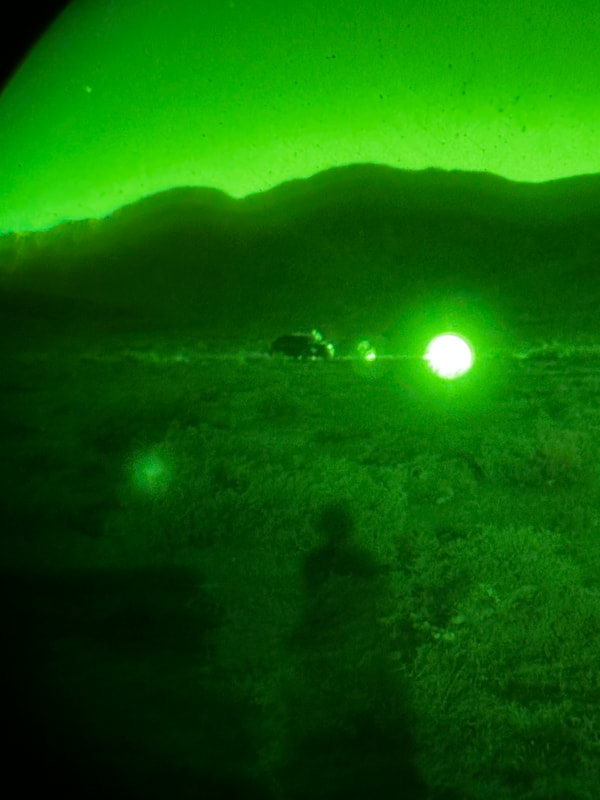















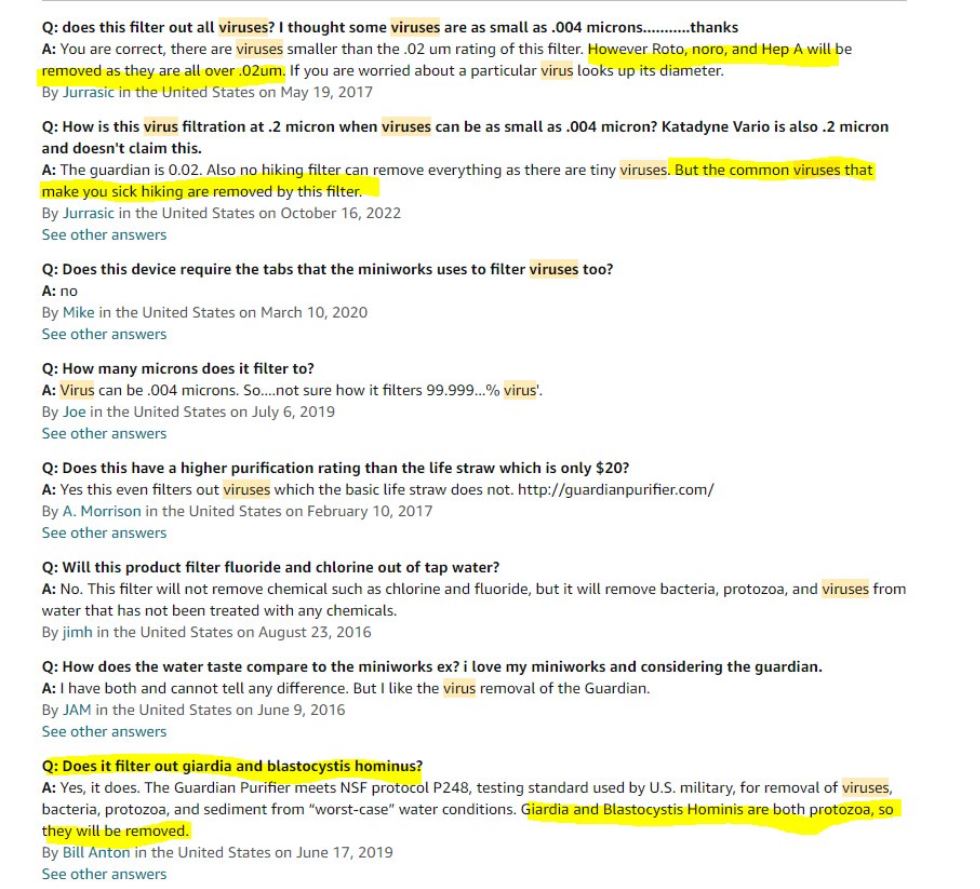
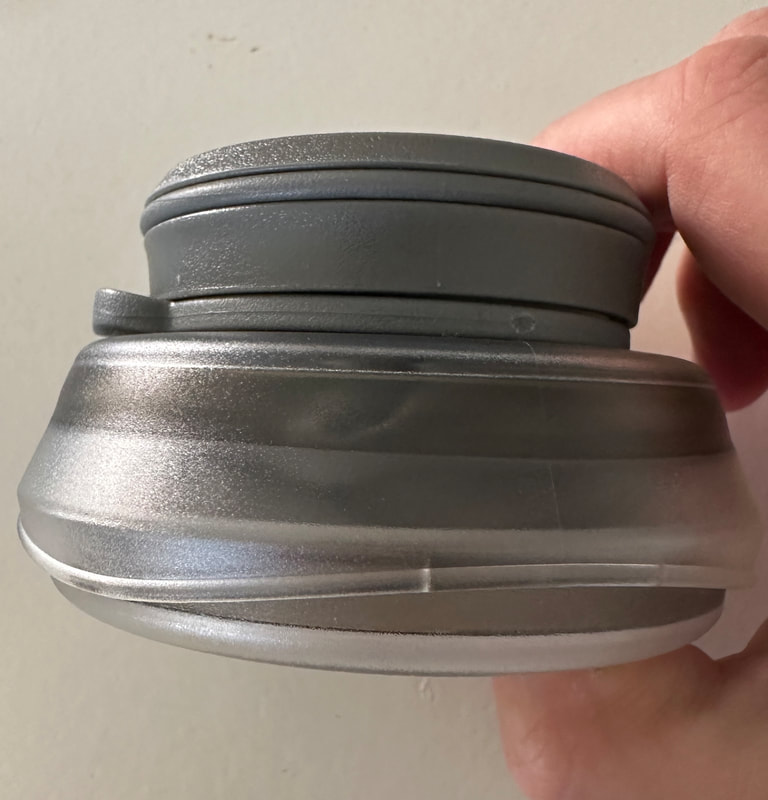











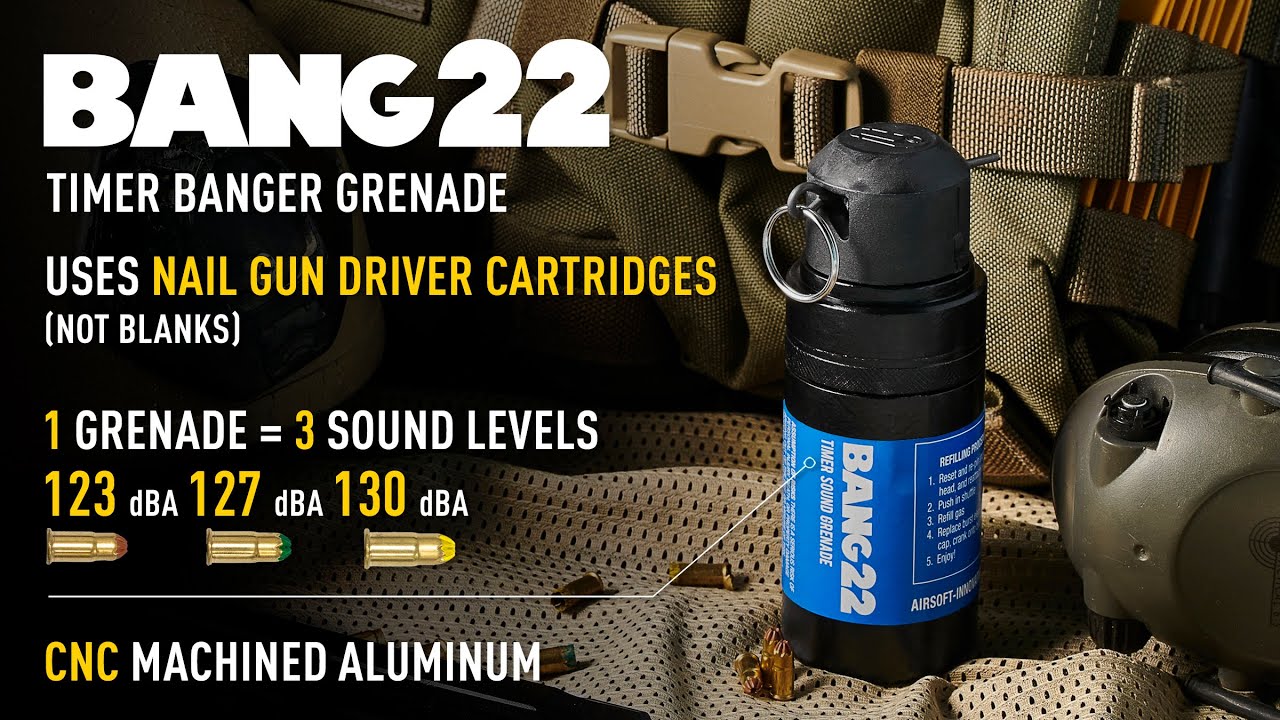


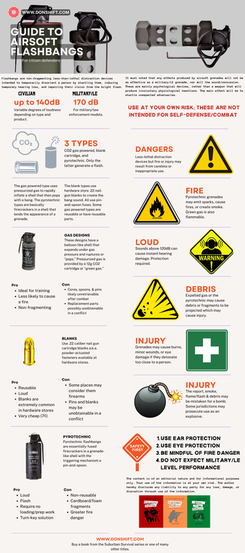


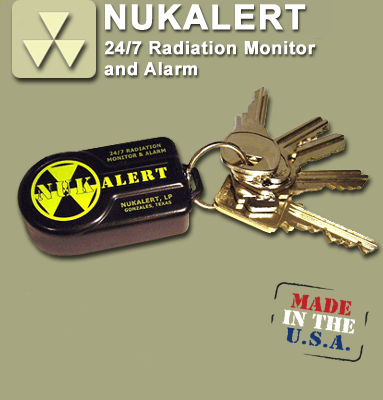

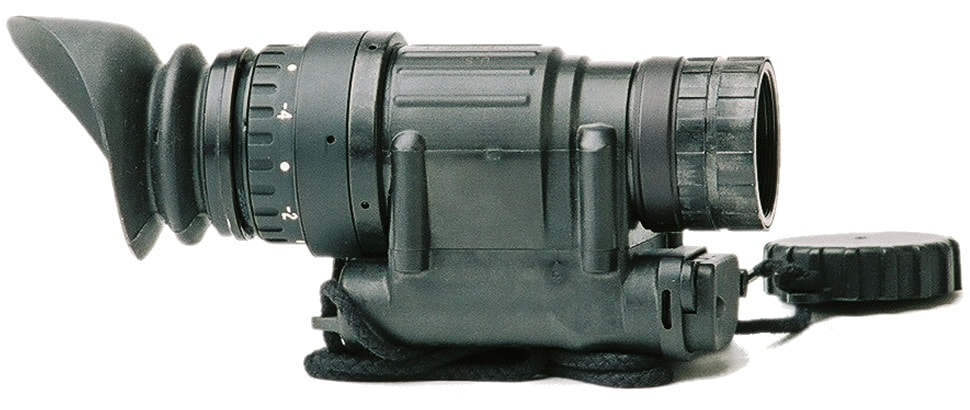

 RSS Feed
RSS Feed
